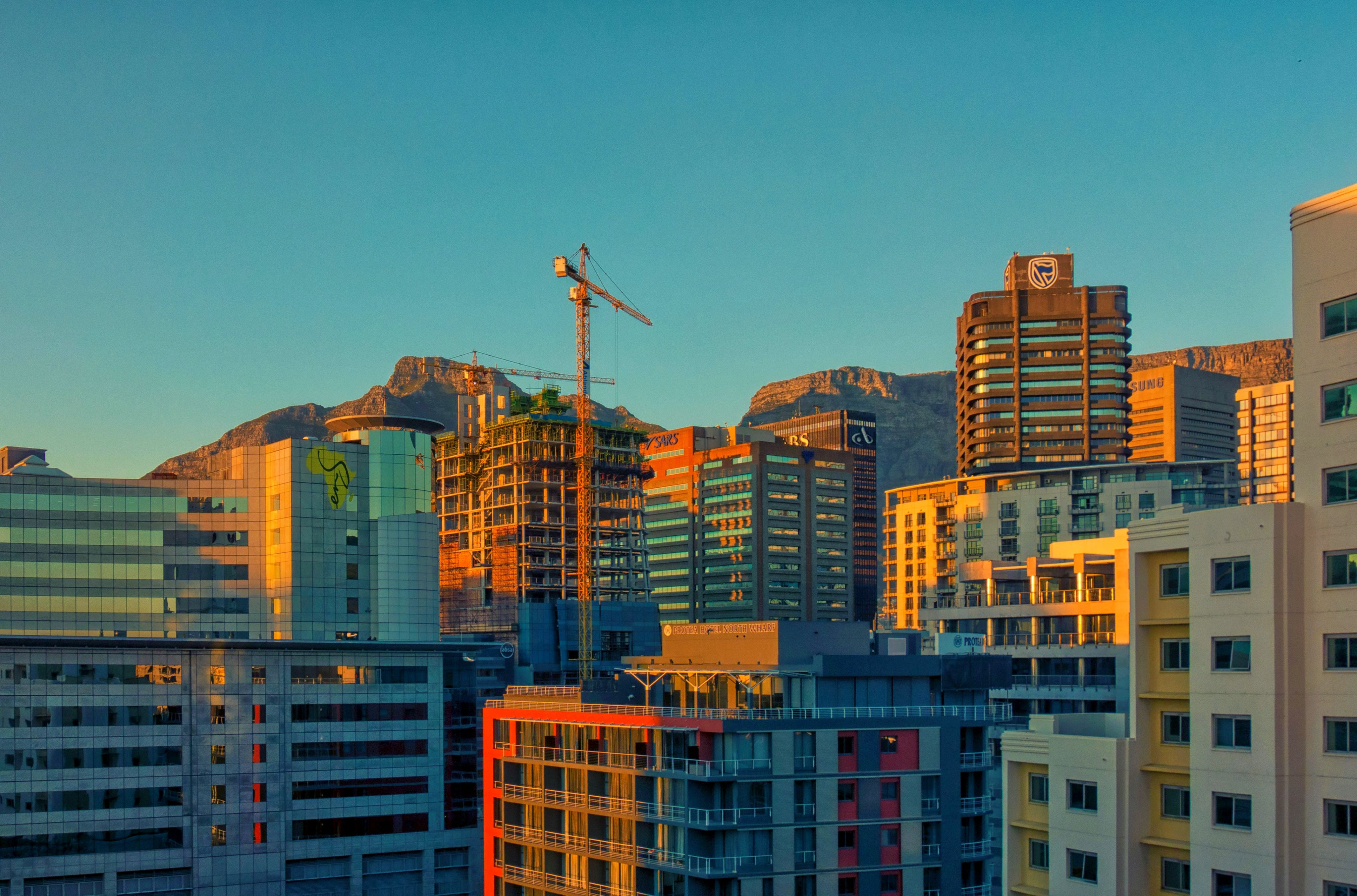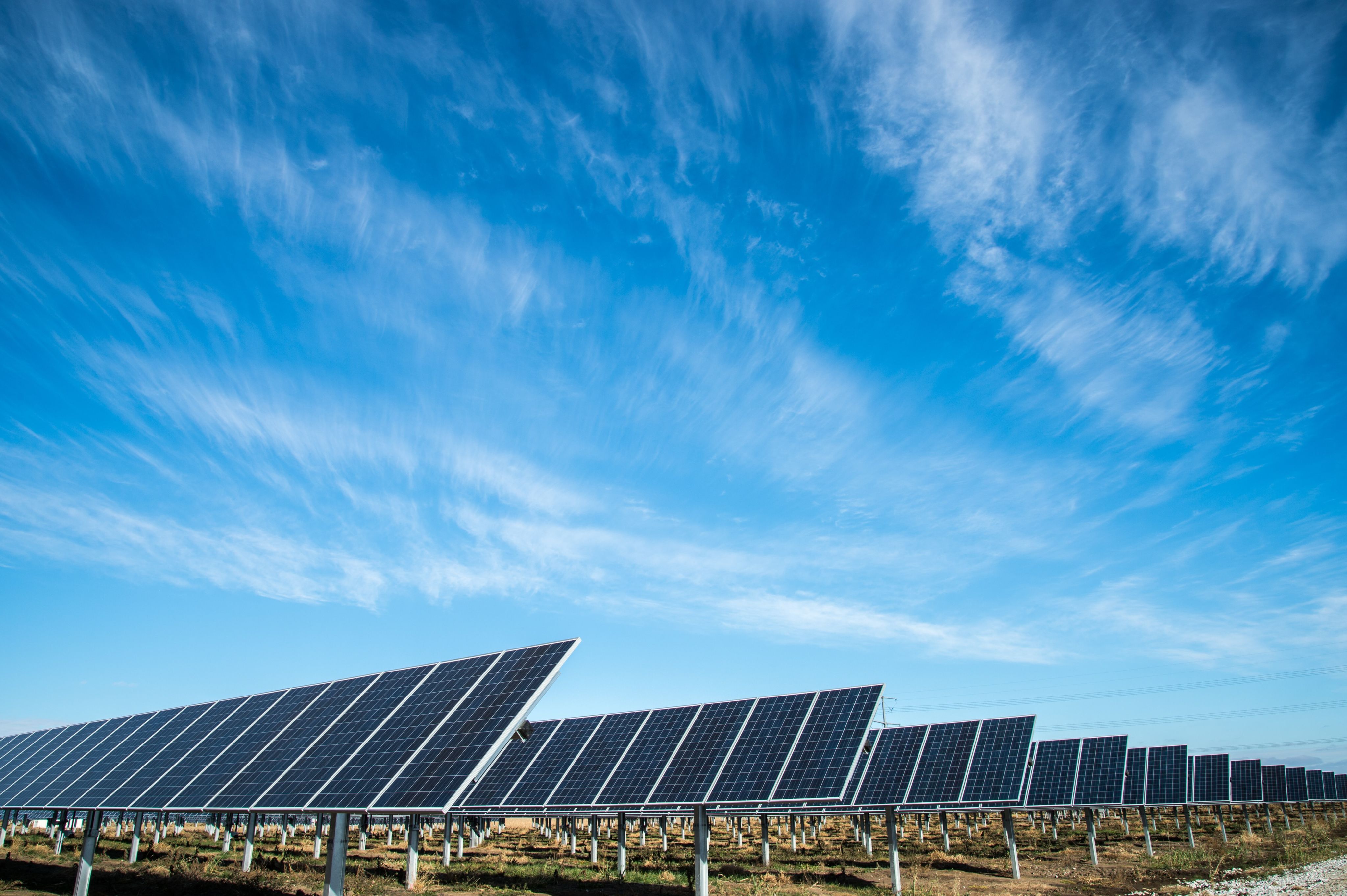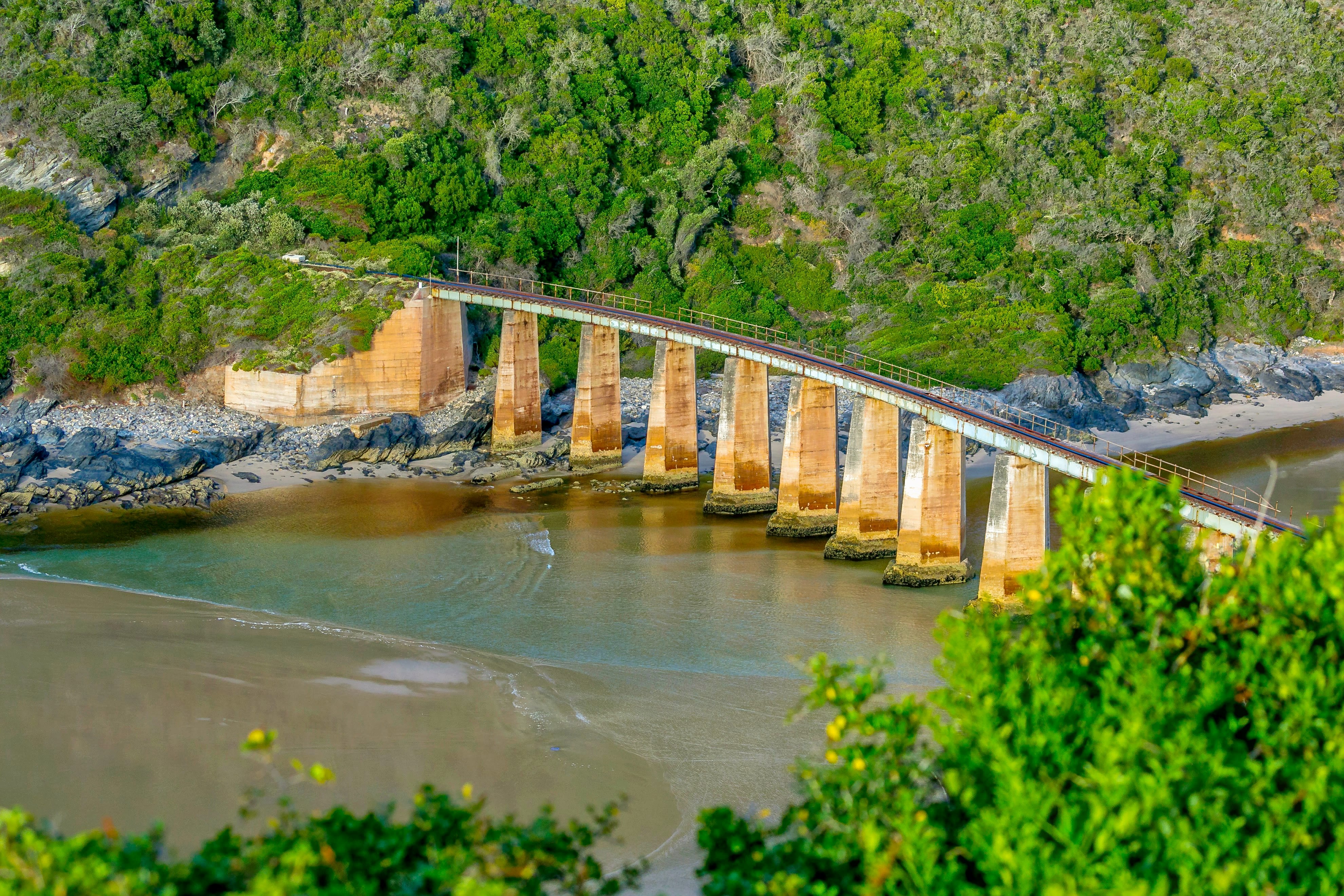Podcast: Lifting living standards with low emissions
How can low-income countries lift living standards as the world works to reduce global carbon emissions?

In this podcast, we examine what 'decent' living standards mean for people in low-income countries – including energy access and transport infrastructure – and how these are critically linked with the urgent need to reduce global carbon emissions.
Join UCL experts Professor Priti Parikh, Professor Jing Meng and Dr Simon Chin-Yee as they discuss what's needed to lift living standards for low-income countries in the global climate crisis, and the role that high-income nations can play.
Listen to the podcast
The Bartlett Review Podcast: Lifting living standards with low emissions
Photo by American Public Power Association on Unsplash
Photo by American Public Power Association on Unsplash
Photo by Mark Harpur on Unsplash
Photo by Mark Harpur on Unsplash
Transcript
Priti Parikh: This is a podcast from The Bartlett Review, sharing new ideas and disruptive thinking for the built environment. Brought to you by The Bartlett Faculty of the Built Environment at University College London.
Simon Chin-Yee: Industrialised countries continue to exploit and extract low-income countries for their own benefit. There's no give and take. That needs to stop.
Priti Parikh: Achieving decent living standards is not negotiable in my opinion. It's something that governments will have to do.
Jing Meng: Most developed countries can cut about 15 to 20 percent of their current emissions if they adjust their lifestyle.
Priti Parikh: Hello, I'm Priti Parikh. I'm a Professor of Infrastructure Engineering and International Development and the Director of The Bartlett School of Sustainable Construction. In this episode of The Bartlett Review Podcast, we are going to talk about the impact of CO2 emissions from low- and middle-income countries.
Historically, the vast majority of greenhouse gases have come from industrialised nations of the developed world. But in recent times, there has been a significant increase in the quantity of carbon emissions from countries with emerging economies as they seek to improve living standards.
Today we'll be asking the question, how can countries continue to achieve an increase in living standard in the context of the global climate crisis and the battle to meet targets aimed at limiting a global temperature rise to 1.5 degrees Celsius? One of the co-authors of the recent report on carbon emissions and accounts data sets for emerging economies is my colleague here at The Bartlett School of Sustainable Construction, Professor Jing Meng, who I'm delighted to say is here with us today. Welcome, Jing.
Jing Meng: Thank you Priti.
Priti Parikh: We are also joined by fellow UCL academic and veteran of a great many COP climate summits. Dr Simon Chin-Yee, who's a Lecturer in International Development. Welcome, Simon.
Simon Chin-Yee: Good to be with you.
Priti Parikh: So Jing, as the lead author of this important report where you look at data from most of the countries on this planet. Tell us a little bit about this report and the data.
Jing Meng: Yeah, we used assessment framework defined as decent living standards to reflect the needs in 10 indicators to achieve human prosperity and wellbeing. In this study, we wanted to assess to what extent the global carbon emissions and the national carbon emissions will increase if we want to lift all the living standards in developing countries. And the results show that Asian and Africa economies are falling behind across multiple indicators. If we lift their living standards, it will result in substantial carbon emissions, particularly in the electricity and the mobility sectors if we increase their access to electricity and also their mobility demand, if they stay in the same energy mix.
Priti Parikh: And am I right in believing that this is the first study done at the scale?
Jing Meng: Yes, because previous studies merely aggregated the emerging economies. But in the study we assessed the emerging economies individually.
Priti Parikh: And when you looked at decent living standards, you brought together a couple of key measures and indicators to define clearly what is a decent living standard. Could you tell us a bit more about that?
Jing Meng: Yeah, we have 10 indicators including food, housing and clothes, and some basic needs, but also some surveys which include education and health. So they are covering many sustainable development goals.
Priti Parikh: So basically it's all the things we need on a day-to-day basis to have a decent life, isn't it? And I think what stood out for me from this study, which I was thrilled to be part of with you, is the fact that actually there are countries on this planet which will need to emit more to achieve a decent living standard. And in fact, I think one of the figures cited in the report is 8.6 gigatons of additional CO2 emissions. What does 8.6 gigatons equate to?
Jing Meng: Yeah, eight gigatons equals about 20 times UK emissions. But take India for example, India is expected to generate 2.5 gigatons of carbon emissions to attain decent living standards. It's about 40 percent of its annual carbon emissions.
Priti Parikh: And I mean Simon, a lot of your work looks at climate justice and low-income countries which are most at risk from the impact of climate change are the ones who contribute the least. If you look at lifestyle emissions, right, I mean we know that probably it's 10% of the richer parts of the world that contribute to most of the lifestyle emissions. So we talk about highly industrialised countries like China, India, US which dominate the discussion around emissions. But how can we manage emissions to allow other countries to have decent living standards in a just and fair manner?
Simon Chin-Yee: I mean, that's the question, isn't it Priti? A just and fair manner. The key words that we're using this year in the UN is this term called just and equitable transition. And I think you know this as well, Priti, we've been talking about environmental justice for decades. We've been talking about climate justice. You and I have a paper on climate justice. We are now talking about a just transition. Why we keep changing this lexicon is because we are not solving the problem of a just transition. The first thing that needs to happen is that these largest emitters need to mitigate their greenhouse gas measures. Now that starts with the EU countries. That involves the United States of course as the historical emitters. But China, it cannot be absolved anymore. India is a large emitter as well. They also need to do this. And under the Paris agreement, they have all agreed to do this.
So the low-emitting, low-income countries need also to be able to continue to grow their economies. It's not just about decarbonisation. It's not just about greenhouse gas emissions being reduced. It's about understanding the living standards of some of these low-income countries.
The first thing is we have to understand what countries have very poor access to energy itself. We know that though globally our populations are growing, the populations are going to be four times as much in Africa, that's going to be nearly 4 billion, by the end of the century. That means we're going to need more energy, not less. So where does that energy come from? That energy comes from clean energy solutions. In many African countries that I work on, this means that they're able to leapfrog to green hydrogen, to solar, to wind, to all of these different renewable energies so that these countries can have access to these energy systems. In a just and equitable transition, it is still the largest emitters that need to reduce their greenhouse gas strategies. Not those most vulnerable, those energy poor. and those who have not contributed to the current state of affairs, Priti.
Priti Parikh: Absolutely. And if we think about the population of India and China put together, that's over two and a half billion. So what they really do will matter in the future, right? Even small measures. And also the challenge we have is, in some parts of the world, there will be communities which will need to consume more to improve their living standards, to improve access to infrastructure. And I think one of the things which comes out of this report that two sectors where we could look at key improvements is mobility, which is transportation, and energy. So Jing, what are sustainable solutions we can look at in those two sectors?
Jing Meng: Yes, about 85 percent of the total increase in emissions will come from these two sectors, so low carbon or even zero carbon technologies will be quite critical. As Simon said, we have some promising technologies, such as green hydrogen or off-grid solar PV. We have a paper to talk about this. They can increase the electricity access in Africa without resulting substantial carbon emissions. And for the transportation sector, the electric vehicle with a source from the renewable energy will be also a promising solution to reduce potential carbon emissions with increase in the transportation sector.
Priti Parikh: And I think those two sectors absolutely will have an impact. And during our recent paper, we talk about how off-grid solar solutions are really hitting the ground running in Sub-Saharan Africa at pace. So there's a lot of interventions around transportation and renewables, which holds promise for us. But Simon, I know you do a lot of work in the shipping sector, and I was wondering if you could share solutions that are being deployed or could be deployed in the shipping sector?
Simon Chin-Yee: So if we go back to this idea of a just transition, a just transition involves maximising the social and economic opportunities of climate actions while minimising and carefully managing any of these challenges. Now, perhaps you know this, Priti, already, but I think it's worth remembering that this idea of just an equitable transition started with workers' rights. It started back in the day when we looked at seafarers, we looked at port workers, we looked at the miners, and it was about their rights. It seems to have morphed itself in the UN now into this wider dialogue around the entire world being able to go into a just and equitable transition. And I'm here for that, I'm fine with that, but it's just that we need to go back to brass tacks sometimes to understand that it's the people that should be at the centre of any human rights-based just transition.
Now in the shipping industry, last year we had a really interesting year in July of 2023 because the International Maritime Organisation, they released their very, perhaps not as forward thinking as we would like, but actually it was a breakthrough and it's called the greenhouse gas strategy. So in article two of that strategy, it states that the IMO remains committed to reducing greenhouse gas emissions from the international shipping, and as a matter of urgency aims to phase them out as soon as possible while promoting the context of this strategy as a just and equitable transition. So part of this is understanding that in that strategy, in any previous strategy, any mention of a just and equitable transition was completely absent. They also make the link in the strategy between development measures and a just transition, which is really key in understanding what I said before, that it's not just about green growth, it's about economic growth as well.
And the other focus here is on the small island developing states and the least developed countries, and how they can transition away from greenhouse gases so that no one is left behind. So in some of the projects that we are working on, for example, we're looking at developing national action plans in southern and eastern Africa on green shipping in lower-income countries. We're also using these countries to explore the use of green fuels to power ships and power ports, meaning that leapfrogging I was talking about earlier, that this can happen, and this can happen in these lower or least developed countries. We're also looking at building green corridors, connecting ports from countries to countries which will be needing the use of green technologies. And finally, we're increasing the capacity in-country to both build and sustain these practices as well as the increase in participation at that UN level as well around decarbonisation.
So whatever we need to do to ensure that this works as a just transition, is first we need to understand that whatever happens, it needs to be both procedurally fair and environmentally effective. Meaning that it needs to be socially just – if we go back to those workers I was talking about, it's about their rights. But it also needs to be globally equitable, meaning that if this isn't handled properly yet again, existing disparities could be exacerbated. And then finally, it's about sharing of technologies. It's been said so many times that the world needs to share, share and develop technologies together. This needs to be done.
Priti Parikh: And it's the IPs really, it's sharing of IP for some of those technologies, isn't it? And I mean, could you explain Simon, why the shipping sector is significant in its contribution? We spoke about energy, transportation.
Simon Chin-Yee: Yeah, sure. I mean, it's significant because we have to understand that the shipping sector, for example, most of us that without realising it, 85 to 90 percent of the world's goods are gone around the world through ships, but they produce over 300 tonnes of carbon a year as well. So that also needs to be flagged. If they produce approximately 3 percent of global greenhouse gas emissions, which when said like that doesn't sound like very much, but if it was a country, it would be in the top 10 of big emitters. So the sector actually does need to have whole scale transition to new scalable zero emissions fuels and technologies.
Priti Parikh: And I think our goal here is to achieve a just transition to higher living standards. But what are the blockers? What are the challenges for this?
Simon Chin-Yee: First of all, it's just the usual thing, right? The business as usual, we keep going round and around in circles in the negotiations and in life, so that the same things happen again. That's number one. Number two, industrialised countries continue to exploit and extract low-income countries for their own benefit. There's no give and take. That needs to stop.
We need to allow countries like Jamaica, like Namibia, like the Marshall Islands, a seat at the table. So when we are discussing the idea of a just and equitable transition, and a transition to new clean, green energies, that they are part of the discussion and not added to discussion afterwards. And if we don't understand that all of these things, all of these issues of economy, of decarbonisation, of growth in all the different sectors and all of these societal issues are interconnected, then we won't have a just transition.
Priti Parikh: In spite of all the blockers and challenges you have highlighted here, Simon, I still remain optimistic that we can look at a just transition. We can look at decent living standards and manage emissions. But Jing, I'm going to turn over to you to see where we can find reasons to be optimistic, and any examples of new best practice.
Jing Meng: Yeah, I think despite all the barriers and also the challenging points mentioned by Simon, I think at least for the low carbon, zero carbon technologies needed in electricity and mobility sectors are quite mature and the costs are declining rapidly. For example, the solar PV technologies cost declined by over 80 percent in the past 10 years. And also the selling price of electrical vehicles also declined rapidly in the past years. So at least it's technologically feasible for these two critical sectors.
Priti Parikh: And I guess if some of those kinds of technological innovations are coupled with behaviour change, awareness, we could be onto something quite promising here. But I want to go back to the report. So just to remind ourselves, this is the largest significant study where we look at emissions and decent living standards. Jing, how easy is it to collect data from such disparate sources, especially if we think about collecting data from emerging economies, low- and middle-income countries?
Jing Meng: Yes, as we focus on emerging economies, the data is not as good as many developed countries. So for the carbon emissions, we collect many data from their national websites. Sometimes we also need to do some translation work, but for the 10 indicators we need for the decent living standard assessment, for some indicators like food, electricity access, housing or education, their national level we can get the data from international statistic databases such as World Bank or the website from United Nations. But we also need data at household level, like air conditioning availability. The data is not publicly available and is derived from the relation between GDP per capita and climate zone. So sometimes we need to develop the, maybe the model for some indicators.
Priti Parikh: So what you're saying is it's not that straightforward and easy. So sometimes we have national data sets, but there are gaps in data, especially in low- and middle-income countries, and a gap more at local or regional level. And I think one of the things that this study is advocating is a bit more of that, to get nuanced understanding at regional level of living standards and emissions.
Speaker 4: This is the Bartlet Review podcast sharing new ideas and disruptive thinking for the built environment.
Priti Parikh: If you think about now, countries, and I believe in COP we have nearly 160 countries who come together.
Simon Chin-Yee: 198.
Priti Parikh: 198 countries, there you go. So let's think about 198 countries. Now, even if you create a database of some sort, how easy is it to get 198 countries to agree on the data and science around carbon emissions? Are there countries denying it?
Simon Chin-Yee: Well, let's start with the fact that I was very hopeful at the beginning of this global climate change regime that for once all of these neoliberal institutions, that's the political scientist in me talking, that we came up with since the end of World War II, this was the one that was supposed to be based around the science, the knowledge. That was the pillar that we're supposed to be understanding how climate change and action on climate change works. Now, are we? No, we're still looking at the politics and the economics. But that strand, that pillar is supposed to be there. So there is hope.
The problem is, and the problem is always, you'll always have those that deny or block the science. So I don’t know if you remember this, but in 2018, the International Panel on Climate Change, the IPCC, put out a special report that was adopted in October by all of the member states. By the time December came around and COP23 in Katowice happened, I was in the room when this was happening. St Kitts & Nevis, a small island state, had proposed to put this report, this dataset, this science at the heart of the negotiations. And it was blocked and it was blocked by four countries. Priti, I want you to guess which four countries blocked the dataset.
Priti Parikh: Possibly India?
Simon Chin-Yee: No, not India. Not India.
Priti Parikh: Oh, got it wrong then!
Simon Chin-Yee: The four countries that were blocking it were the typical ones. It was the lead was Saudi Arabia, swiftly backed by Kuwait, but the other two were Russia and the United States. And they were blocking it because, as the Saudi delegate said, science has no business in these negotiations. So understanding that that is the start of where we were coming from and out of Katowice, what, four or five years ago? That's one thing. But I guess on the more positive side of things, there's loads of modelling being done and understanding these NDCs, these nationally determined contributions, and understanding where we need to go to limit global warming to a 1.5 degree world. Now are we doing it? No, we're not doing it yet. But the targets are out there. And I guess I'm also hopeful as someone who works in shipping and a very technological sector, is that you can see the results and you can see where there are possibilities of moving to a transfer of technology, or to a greener technology, let me put it this way. And that is part and parcel of ramping down global emissions.
Priti Parikh: And it's interesting because whilst we all think, believe, that there's data around emissions, it's said clearly, connecting it to decent living standards is quite powerful because it gives governments a really good decision-making tool now. Because for them, one of the jobs of governments is to improve living standards for its citizens. But being able to link that more directly with emissions means they're making more informed decisions, choices on the technologies that need to be deployed, on the kind of pathway, the journey that they need to go through to achieve those living standards. Because achieving decent living standards is not negotiable in my opinion. It's something that governments will have to do. So in a way, that's why I was quite excited by the study and the report because it draws the link between the two. And if you can bring it into COP, it might address some of the politics around countries feeling it's important or not.
But what is interesting in this data set that we've looked at, is we've looked at some kind of physical characteristics. So we've looked at food, housing, clothing, access to infrastructure, education, health. But if you think about living standards, are we missing things like culture, identity, some of the intangibles, which are sometimes difficult to quantify, but can be quite significant for wellbeing, for forming communities?
Simon Chin-Yee: I think we need to change the way we think about what development looks like, what living standards look like. We usually, as you said, all of those things, those indicators that you mentioned, Priti, are really important. Housing, health, access to education, all of these things are important. But we tend to look at living standards along this socioeconomic, developmental line ,as opposed to cultural. And I think culture as in small island states and African countries have been talked about for a while now. And so I think that the historical and the cultural aspects should really be added to this list of indicators to understand what good living or living standards means. We need to reframe what we want out of life, and what people and communities want out of life.
I love working with small island states, and specifically the Pacific Islands as well, because there's such good negotiators in these realms. But if you look at what the reality is on the ground for many of them, for Tonga, for Vanuatu, for Tuvalu for the Solomon Islands, the identity that they have comes from their land, it comes from the sea, it comes from the sun. I think we need to move back to that to understand where identity actually comes from, what's important. And I think part of that is embracing the natural world.
Priti Parikh: And I totally get what you say about small island states because I do a lot of work in deploying infrastructure in informal settlements, very marginalised vulnerable communities around the world. And yes, on a day-to-day basis, they're very focused on the physical infrastructure and housing and those needs. But if you walk into those communities, they're very close knit, well established social structures, networks, which they maximise and use and they find very enriching. So for them, whilst they are aiming for physical infrastructure, those networks really matter and enhance and improve their quality of life.
And I mean, so far we've been looking at living standards for emerging economies, right? But surely there are things that high-income countries can do better and can learn from ways that low- and middle-income countries manage their living standards. So how can developed nations reduce consumption, Jing?
Jing Meng: Yeah, in this study we not only calculated how much extra emissions will be generated if we lift the living standards in emerging economies, actually, we also calculated how much carbon emissions can be avoided if all the developed countries adjust their lifestyles in decent living. In the defined indicators in the study, the carbon emissions in almost all developed countries can cut about 15 to 20 percent of their current emissions if they adjust their lifestyle, especially the carbon emissions from the mobility sector and the healthcare sector. And in the electricity sector, because the current indicator we use is access to electricity, not the per capita electricity consumption, so if we improve this indicator to also include the per capita and energy consumption, electricity consumption, I believe much more carbon emissions can be avoided if we change the lifestyle in developed countries.
Priti Parikh: So I think lifestyle is significant. And I mean in the paper the US was mentioned a few times, that if you look at power capita consumption of goods and services in the US, it's substantially higher than other countries. And what was interesting for me having grown up in India, is that if all the countries had the same living standard as India, emissions wouldn't be a problem at all, which might take us to another extreme, but basically there is hopefully a happy medium between what the US is doing and what some of the emerging economies are doing as well to achieve a decent living standard. And I think it goes back to this thing of needs and wants.
Simon Chin-Yee: That's key Priti. And I think that goes back to something you said earlier that I take a little bit of issue with, is that we need to keep increasing infrastructure. I think maybe in the emerging economies that's potentially true, but I don't think that is true across the board. And I think back to what I said about understanding both the cultural identity and importance of place for person, that place doesn't need to have more things, it just needs to be better for people.
Priti Parikh: Yes. So I guess the engineer in me is always thinking about infrastructure, but you're right, in some instances it'll be people building infrastructure, but in some instances it's the quality of it and what we are doing and their experiences. So yes, Simon. Absolutely.
So we've been discussing living standards and emissions. I mean at The Bartlett School of Sustainable Construction in the Bartlett Faculty of the Built Environment, I mean, some of the key questions we ask is, do we need to build more infrastructure, right? And if so, what is the type of infrastructure we need to build, which will be climate resilient? What is the right thing to do for the future? A part of me thinks, yes, for nations that will need to invest in infrastructure to improve living standards, but in other parts of the world, is it more about infrastructure that is climate resilient, which will matter more?
Jing Meng: Yeah, I think we can do more research at the infrastructure level, for example, to repair the unsustainable infrastructure, to retrofit the infrastructure, or to increase the resilience. It's about the climate change adaptation. But we need more infrastructure, especially in emerging economies, to increase their electricity access. But we can focus on the renewable energy infrastructure. For example, the solar PV or the hydrogen.
Priti Parikh: And I mean, a lot of my work on renewables in Sub-Saharan Africa, we find the blocker is not the technology per se, but the business models underpinning it, especially because we have the fossil fuel sector, which is heavily subsidised whilst the renewables sector is not. So thinking about how we can remove those blockers so that we provide basic decent living standards for people. They have access to services like electricity, but the solutions are climate resilient.
Simon Chin-Yee: I said this earlier when I was talking about shipping, but I'm not in The Bartlett School of Sustainable Construction, but I am part of the Bartlett School of Energy. And so understanding how those different types of infrastructural projects are needed to be greened and can be part of that green clean solution, I think is important. Because as I said, ships move goods, and energy actually, around the world, and lots of people are completely reliant on the fact that shipping is getting their goods to market or getting goods to them.
Priti Parikh: And I just wanted to add that the work on emissions and living standards will continue. So if anyone wants to join forces with us, do get in touch with us, actually, because we'll be developing future projects out of this, where we'll be looking at regions, we'll be looking at different sectors to see what more we can do to support a just and equitable transition, to see what more we can do to support some of the conversations, Simon, that you might be having in COP and various climate conferences and events.
So thank you very much to Professor Jing Meng and Dr Simon Chin-Yee. And for more information about The Bartlett Faculty of the Built Environment, you can visit our website, ucl.ac uk/bartlet, and follow us on Twitter, or X as it's called nowadays @TheBartlettUCL
About the speakers
Learn more about infrastructure and construction
UCL's Bartlett School of Sustainable Construction offers a range of leading undergraduate, master's, MBA and research programmes to build your skills as a leader in infrastructure and construction. We're rated the UK's #1 construction school by the Guardian Good University Guide 2023.
Podcast produced by Adam Batstone
© UCL The Bartlett 2024






